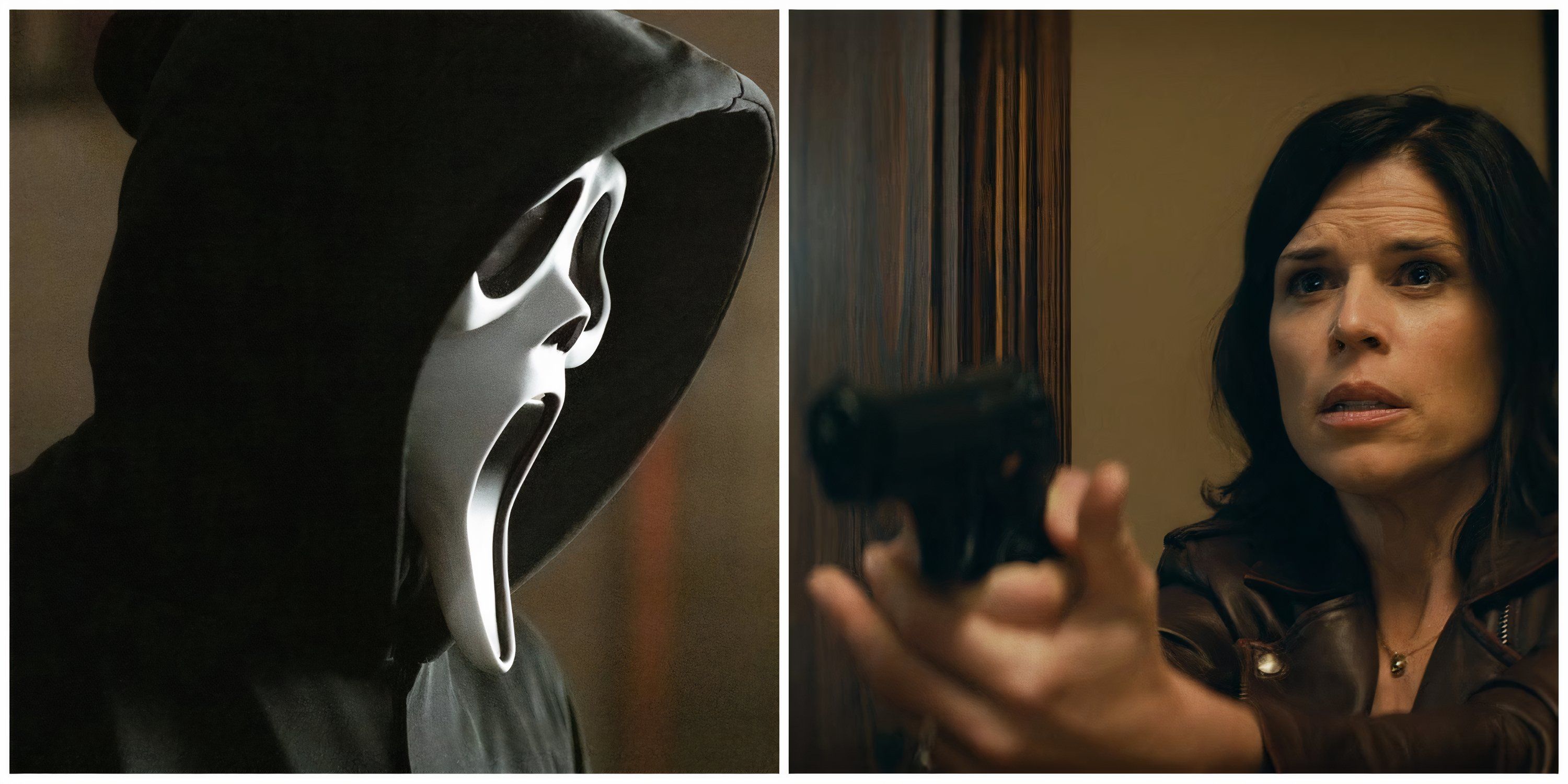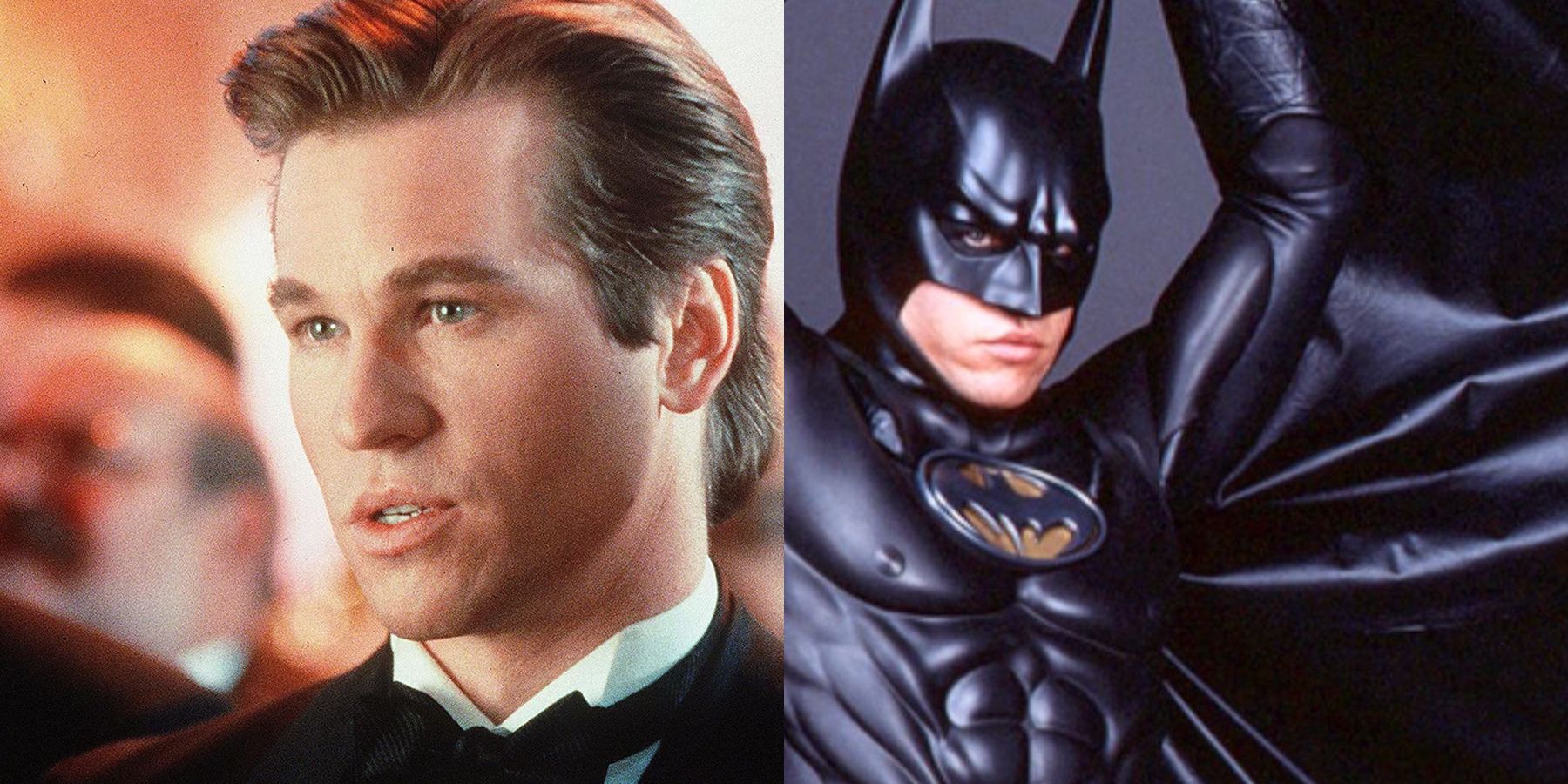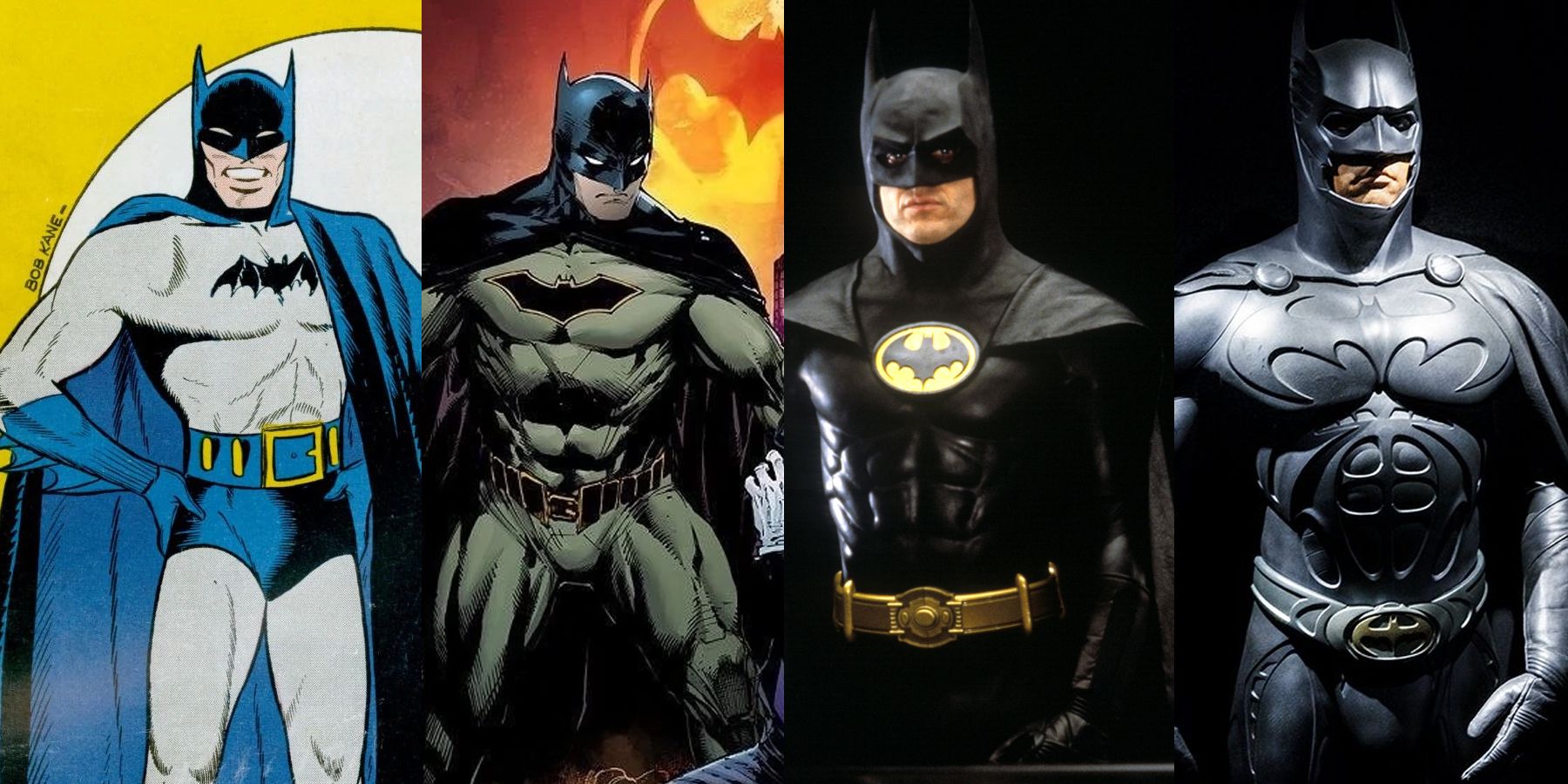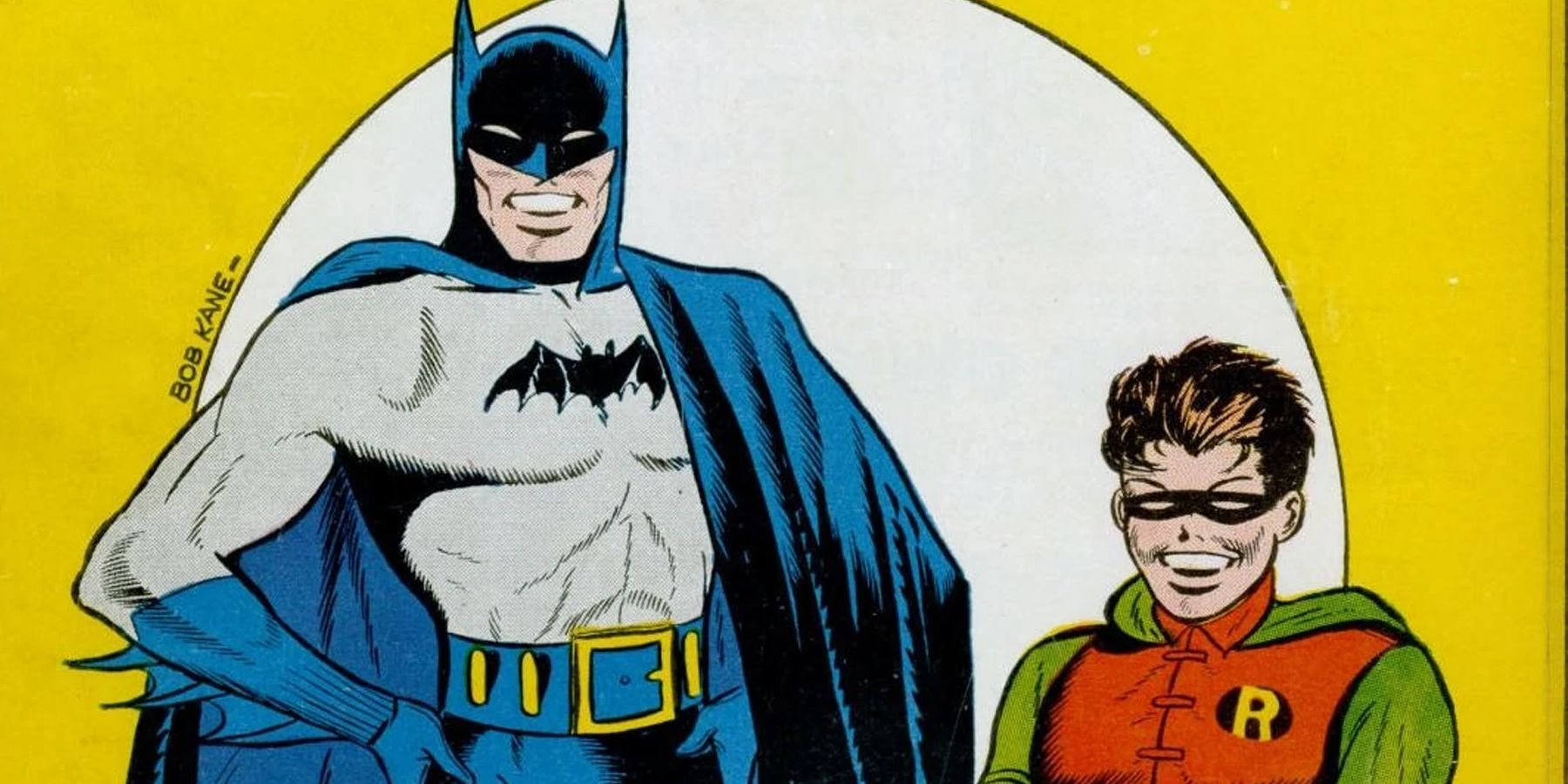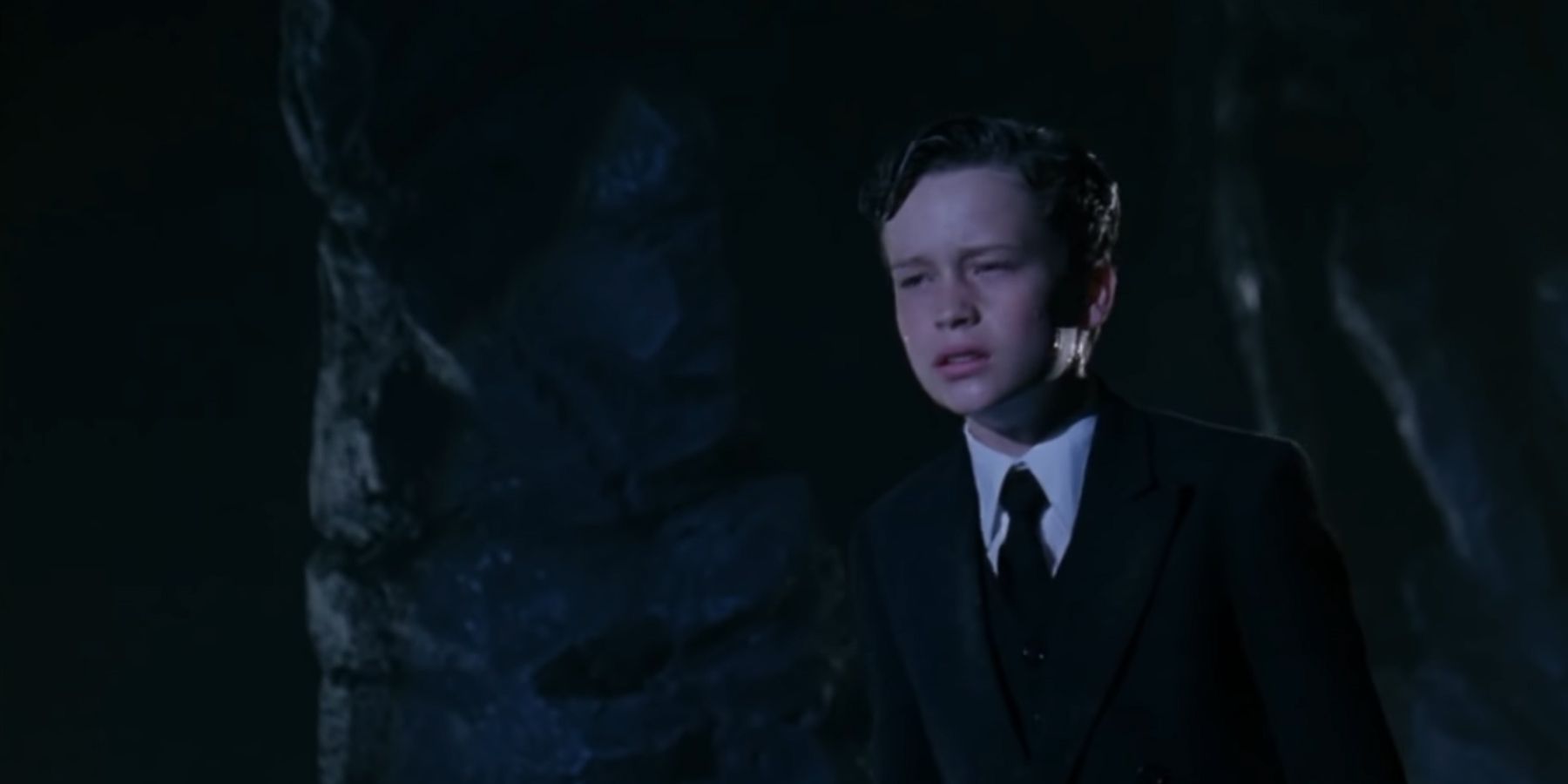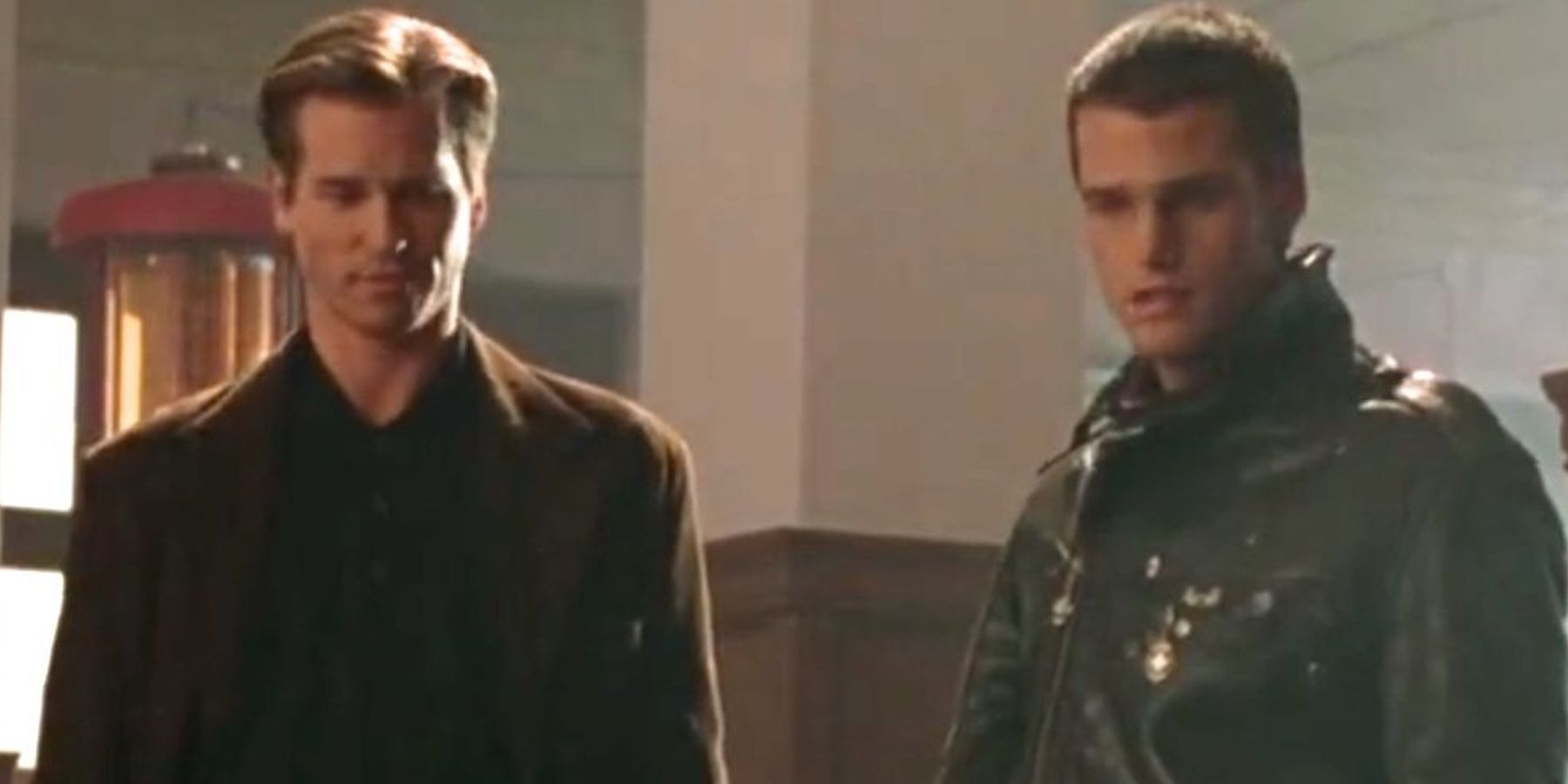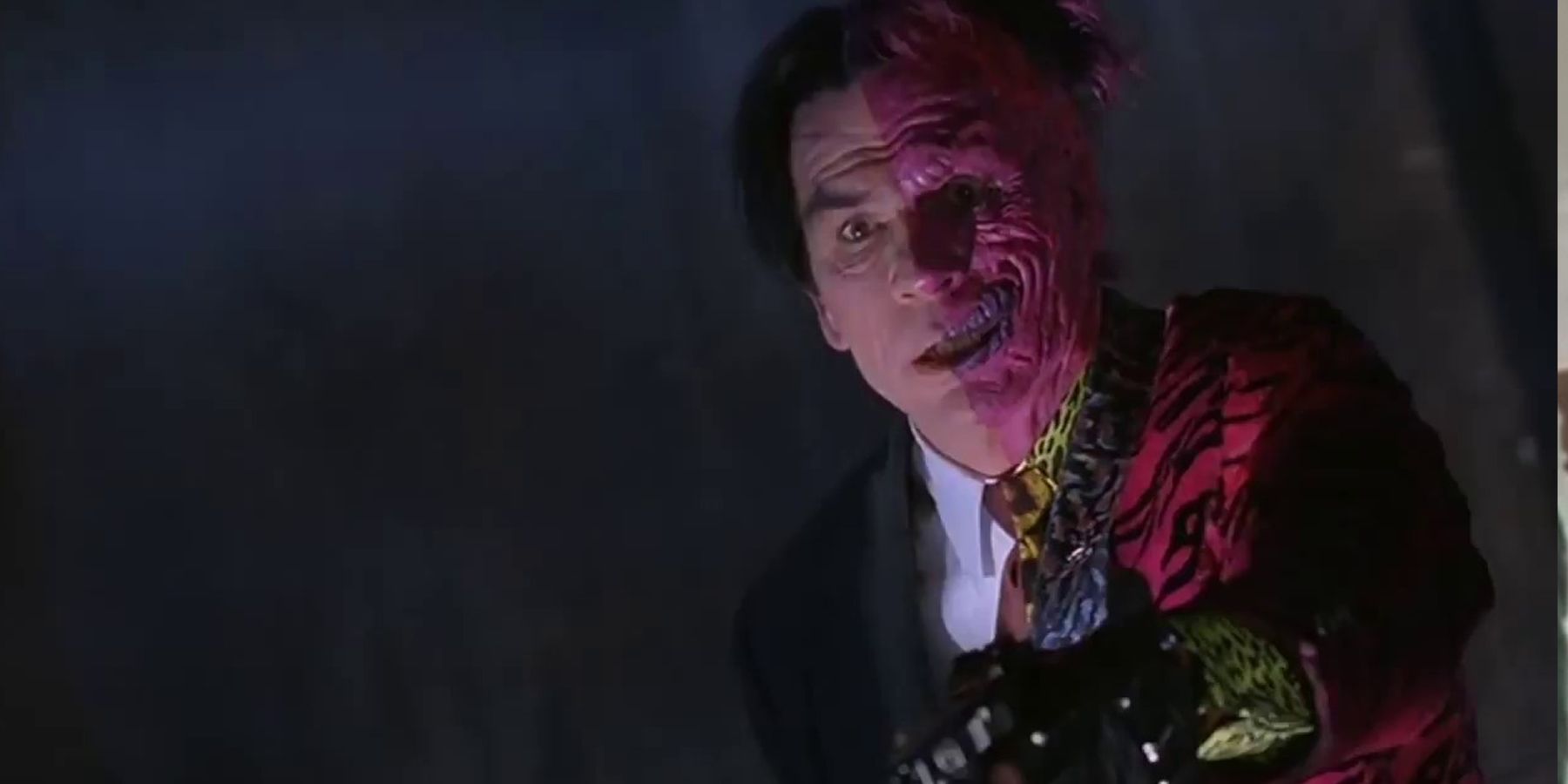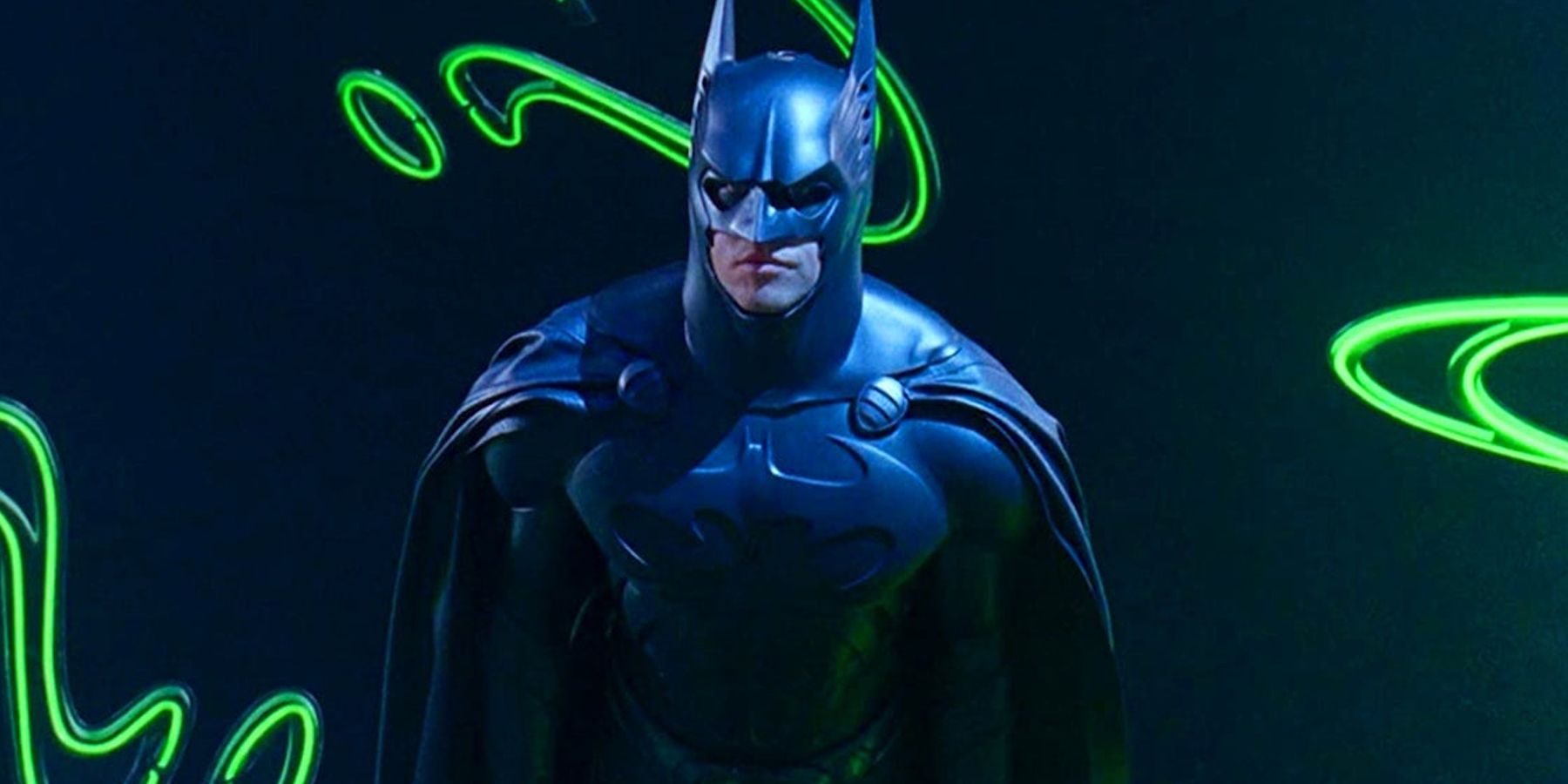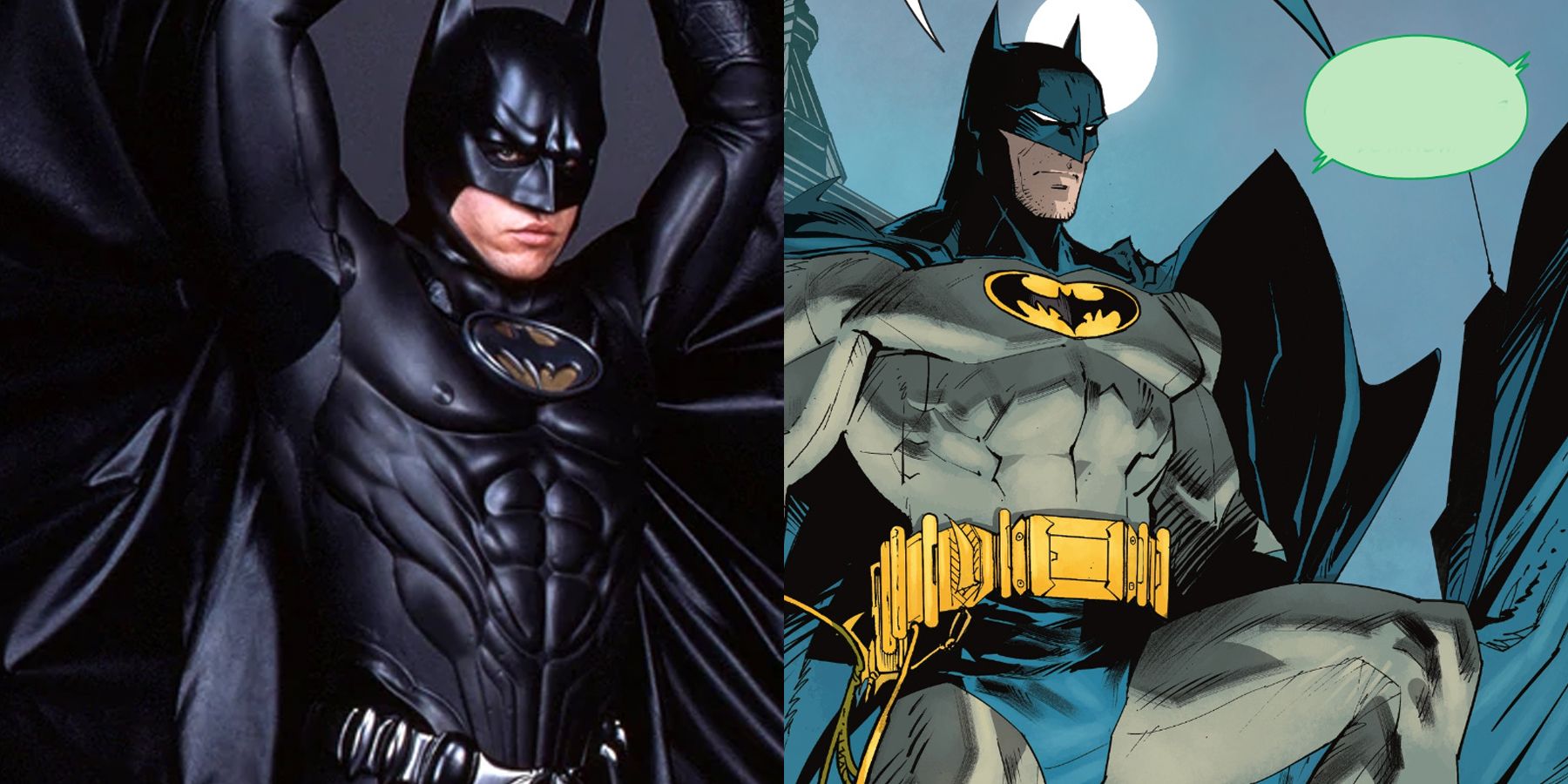It’s one thing for the Riddler to dazzle Batman with his puzzles, but it’s another thing to be backed by the rather aloof Two-Face. Thankfully, Val Kilmer in Batman Forever doesn’t have to face these villains alone. Accompanying him for the first time is Chris O’Donnell’s Robin, who also makes his first appearance in the big screen.
While Batman Forever finally marks the first appearance of the Dynamic Duo on the big screen, there’s more to Val Kilmer’s portrayal of Batman than meets the eye. Moreover, it seems comic readers that love DC Comics can spot some key details that make Val Kilmer’s Batman quite an entertaining and unique portrayal of the Dark Knight.
7 Multiple Batman Physiques Fit The Comics
While Michael Keaton’s Batman was originally criticized for being too “average,” some could argue that Val Kilmer’s build was perfect for a buffier Bruce Wayne and Caped Crusader. This was the first time Batman fans saw Bruce Wayne with differing physiques in film. This would be repeated when Christian Bale's build was also bulky, as well as Ben Affleck's build being muscular.
Interestingly, Batman's multiple physique variations have their origins in the comics. One can compare the leaner Keaton to the original Batman, who wasn't as muscular. Meanwhile, Kilmer's Batman was indeed more muscular and bulkier, more akin to a modern Batman prior to the appearance of his predecessors.
6 A Return To Comics Tradition
Despite the tonal shift in Batman Forever, a lot of people still praised Kilmer’s performance as Batman, primarily because of how it reminded fans of the traditional portrayal of Batman as he appeared in the comics. Batman Forever portrayed Bruce Wayne as a public figure, while Batman was more of a celebrity vigilante.
This kind of colorful personality was something the comics tried portraying, given Batman’s penchant for crazy adventures. It's also an interesting note, considering a lot of complaints towards the Tim Burton films was its extremely dark nature and rather merciless nature of Batman when it comes to dealing with his adversaries.
5 A More Psychological Take
While one can argue that the Burtonverse was already a dark take on the Batman persona, it’s Batman Forever that really explicitly explored more of Bruce Wayne’s psychology. In this film, fans first see a glimpse of horrific loss of Bruce’s parents, as well as Bruce’s transformation of his fear of bats into an inspiration for his path towards justice.
Comic fans would particularly appreciate a flashback scene where a giant bat flies directly towards a cowering Bruce. This is a scene directly lifted from “The Dark Knight Returns” miniseries.
4 Sidekick Storylines
It’s during Batman Forever that Bruce Wayne and Dick Grayson argue over Batman’s need for a sidekick. During one of their arguments, Alfred and Dick agree that having a sidekick is a good idea, while Bruce is against it.
Fans of the comics might recognize this conflict as similar to Tim Drake’s storyline compared to Dick Grayson’s. In the comics, Batman also hesitated taking on Tim Drake as an apprentice despite his talents, particularly because of what had happened to Jason Todd. It was also thanks to Alfred and Tim that Bruce eventually accepted Tim Drake as the next Robin. This might explain why Dick’s costume in Batman Forever is quite similar to Tim Drake’s costume.
3 Batman Brings Death This Time
Granted, while Burtonverse films had villains the Penguin and the Joker die while fighting Batman, their deaths were inevitably the result of accidents during their confrontation. On the other hand, fans criticized Batman Forever because Batman’s actions directly resulted in the death of one of his foes.
Again, while Batman didn’t necessarily kill Two-Face, it was Batman’s strategy fighting him that led to his demise. In their confrontations, Two-Face always flips a coin before striking Batman. So when Batman distracts Two-Face with multiple coins, Harvey Dent gets confused and eventually falls to his death. Fans didn’t take this lightly, as Batman is shown never to cross the line in his fight against crime.
2 A Glaring Bat Symbol
A lot of Batman costumes in the comics used an alternate Bat Symbol inside a yellow oval, with a larger, more imposing Bat Symbol. However, in the films, it’s actually Batman Forever that made use of the more glaring Bat Symbol — a departure from the Burtonverse and usual depictions of Batman at the time with the yellow oval crest.
This is a tradition that future films would follow, and the larger Bat Symbol will become a staple in Batman depictions in future films. Interestingly enough, the larger Bat Symbol without the yellow crest will also become a staple in the comics, with more modern Batsuits simply having a large Bat Symbol at the center of the suit.
1 An Odd Costume Design Detail
As fans would remember, it’s Kilmer’s Batman that formally introduced the “Bat Nipples” in the Batsuit’s design. However, the Bat Nipples was just one anatomical element present among several others in the new Batman Forever Batsuit, which was arguably more muscular and streamlined compared to its predecessors.
However, fans of the wackier Batman films could just as easily counter the "Bat Nipples" insult with the Bat Trunks argument that appear in the comics. In fact, Batman wore trunks throughout all his comics appearances until Knightfall, when Bane broke his back. When Batman returned with the Troika suit in 1995, that Batman started sporting an all-black suit with no briefs on the outside.
The Batman starring Robert Pattinson will premiere on March 4, 2022.



